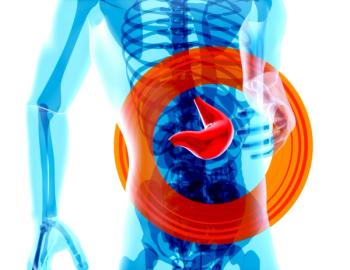A phase 3 randomized trial of 18,476 adults found that Pfizer’s quadrivalent nucleoside-modified mRNA (modRNA) influenza vaccine demonstrated statistically superior efficacy compared with a licensed quadrivalent inactivated vaccine during the 2022–2023 influenza season. The modRNA vaccine reduced laboratory-confirmed influenza associated with influenza-like illness by 34.5% (95% CI, 7.4–53.9), meeting prespecified criteria for both noninferiority and superiority.1
Among 9225 participants who received the modRNA vaccine and 9251 who received the control vaccine, influenza-like illness occurred in 57 vs 87 individuals, respectively. All confirmed cases were caused by A/H3N2 or A/H1N1 strains, with almost no influenza B circulation during the study period. An end-of-season analysis in the evaluable efficacy population estimated a relative efficacy of 28.7%.1 According to Pfizer, assuming FDA-approved vaccines had an absolute efficacy of 44% to 54% during the same season, this end-of-season estimate corresponds to an approximate absolute efficacy of 60% to 67% for the mRNA vaccine.2
Hemagglutination inhibition (HAI) results showed noninferior antibody responses for influenza A strains but not for B strains. Immune responses to A/H3N2 and A/H1N1 were higher in the modRNA group than in the inactivated-vaccine group.1
What You Need to Know
Pfizer’s modRNA influenza vaccine reduced laboratory-confirmed influenza associated with influenza-like illness by 34.5% compared with a licensed inactivated vaccine, meeting noninferiority and superiority criteria.
The vaccine generated higher immune responses to A/H3N2 and A/H1N1 strains but showed noninferior antibody responses to A strains only, with limited influenza B circulation during the season.
Reactogenicity was more frequent with the modRNA vaccine, though typically mild or moderate, and overall adverse-event profiles were comparable between groups.
Reactogenicity occurred more frequently among modRNA recipients but was generally mild or moderate. Local reactions were reported in 70.1% of the modRNA group and 43.1% of the control group, and systemic events occurred in 65.8% vs 48.7%, respectively. Fever was reported in 5.6% of the modRNA group and 1.7% of the control group. Overall adverse-event profiles were similar between groups, and no clinically meaningful differences in severe events were observed. Serious adverse events were monitored through 6 months.1
According to the investigators, “T-cell expression of interferon-γ with the modRNA vaccine was generally higher for all four strains at all time points tested, with detectable cell-mediated immune responses at 6 months for all strains.”1
The study enrolled healthy adults aged 18–64 years across the United States, South Africa, and the Philippines. Participants were randomized to receive either the quadrivalent modRNA vaccine or Fluzone, Sanofi’s licensed inactivated quadrivalent vaccine. Immunogenicity was assessed by HAI assay; reactogenicity was evaluated within 7 days; adverse events through 1 month; and serious adverse events through 6 months.1
Investigators also noted several study limitations. The trial relied on relative rather than absolute efficacy, was conducted during a single season with minimal influenza B circulation, and excluded key groups such as children, adults ≥65 years, pregnant individuals, and immunocompromised populations, limiting generalizability.1
These findings align with broader clinical efforts to evaluate mRNA-based influenza vaccines across manufacturers. Pfizer reported that the modRNA vaccine “provided both similar and improved prevention of a first episode of laboratory-confirmed influenza” in the trial population. Moderna previously withdrew its US application for an mRNA COVID-19/flu combination vaccine. In a separate phase 3 study, Moderna’s standalone mRNA influenza vaccine demonstrated a relative efficacy of 26.6% versus a standard-dose influenza vaccine in adults aged ≥50 years.2
Despite positive clinical data, the regulatory pathway for mRNA influenza vaccines in the US remains uncertain. In August, approximately $500 million in funding for 22 mRNA vaccine programs was cancelled, and national health leadership has publicly raised concerns about mRNA vaccine safety. No US regulatory decisions specific to Pfizer’s investigational influenza vaccine have been announced.2
Overall, the phase 3 findings indicate that Pfizer’s modRNA influenza vaccine offers improved protection against circulating influenza A strains compared with a licensed inactivated vaccine, with an acceptable safety profile despite higher reactogenicity. Ongoing regulatory developments will determine the next steps for mRNA-based influenza vaccines in the US.
References
1.Fitz-Patrick D, McVinnie D, Jackson L, et. al. Efficacy, Immunogenicity, and Safety of Modified mRNA Influenza Vaccine. N Engl J Med 2025;393:2001-2011. November 19, 2025. Published November 21, 2025. DOI: 10.1056/NEJMoa2416779
2.Eaton E. Pfizer's mRNA flu shot trumps inactivated vaccine in late-stage study. November 20, 2025. Accessed November 21, 2025. https://firstwordpharma.com/story/6681792
























































































































































































































































































